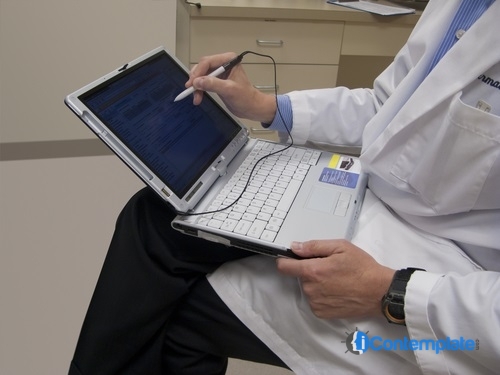<p style="text-align: justify;">There is absolutely no denying that the world of healthcare has changed. Do you remember the days where we had to fill out endless amounts of paperwork, tiring our arms and fingers just to get into a hospital, an emergency room, a dentist’s office, or any other healthcare facility? Thanks to the HITECH Act, these days are long gone.</p>
<p style="text-align: justify;">“Paper-based and electronic patient records generally are used in parallel to support different tasks. Many studies comparing their quality do not report sufficiently on the methods used,” says NBCI.</p>
<p style="text-align: justify;">Unfortunately, there is much debate over the safety of both.</p>
<p style="text-align: justify;">Some fear that electronic medical records are not safer than paper format. However, when it comes to paper office forms, there are risks that need to be taken into account.</p>
<p style="text-align: justify;">For paper records, there is the chance—or opportunity—that these can be found around the doctor’s office, hospital, or other healthcare facility. What happens when a staff member finds records left on counters or possibly in exam rooms? Another potentiality is finding them on top of copy machines. Oh, and let us not forget that there can be misdirected fax copies. Other similar situations are possible to occur, which does not guarantee that paper records are indeed the safer method of storing one’s personal health information.</p>
<p style="text-align: justify;">Of course, inappropriate or perhaps accidental access can be either intentional or unintentional. After all, access to these paper formats require actual physical use and cannot proceed without the touch or handling of another human being. On the plus side, being secure—and safe—about paper records requires storing these records into storage areas. This does secure against any intentional or malicious acts of gaining access to these records, but if a staff member has a way to get into these storage areas, what happens next?</p>
<p style="text-align: justify;">Electronic records have a fairly different story. With electronic medical records, there are many more benefits to its paperless counterpart. Here is a simple list of reasons why.</p>
<p style="text-align: justify;">Electronic medical records can track data over time, allowing more access to up-to-date information crucial to your wellbeing.</p>
<p style="text-align: justify;">Electronic medical records can identify as well as notify patients who are due for visits, checkups, screenings, and the like.</p>
<p style="text-align: justify;">Electronic medical records monitor how patients ‘measure up’ to certain health trends. These include vaccinations, blood pressure readings, and more.</p>
<p style="text-align: justify;">Best of all, electronic medical records overall benefit the entire health department by providing a high quality care in a particular practice. This makes it easier for a doctor, nurse, or staff member to get a better understanding of the patient, his or her concerns, his or her needs, and his or her very own diagnostic. This goes a long way—and it certainly takes less time than filling out paperwork. Essentially, electronic medical records make it a more personable experience for the patient, allowing him or her to feel more at ease, more attended to, and a sense of more personalized care.</p>
<p style="text-align: justify;">Hospitals have truly come to appreciate the value of collecting and analyzing data that help them understand where and how often things go wrong through electronic medical records. This keeps doctors, nurses, and fellow staff members more knowledge of you and who you are. Also, the federal government will start to penalize hospitals, practices, and offices who do not comply with the electronic medical records software epidemic—so to speak—which means, in the long run, these are here to stay.</p>

Paperless Records Versus Electronic Medical Records: What’s Your Take?
